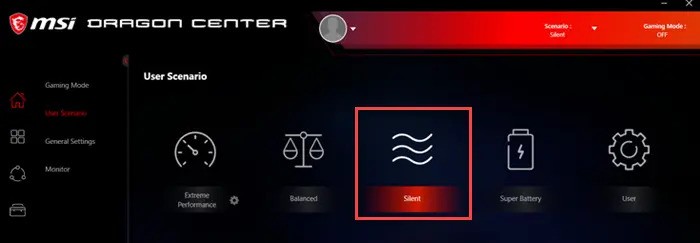Processor speed is crucial in how fast a computer or device performs tasks, from opening apps to running games.
The speed of a processor can be limited by firmware to manage heat, power efficiency, and device longevity. Firmware restrictions ensure optimal performance while protecting the hardware, but they may prevent the processor from reaching its full potential.
In this article, we’ll dive into how firmware can limit processor speed and what you can do to fix or potentially manage these limits.
Understanding Processor Speed
1. Components That Determine Processor Speed
Processor speed depends on clock speed, core count, and architecture. Clock speed measures tasks’ progress, while more cores allow multitasking. A processor’s design and technology also influence how efficiently it performs overall.
2. Clock Speed and Its Impact

Clock speed, measured in GHz, tells how many operations a processor completes per second. Higher clock speeds mean faster performance, but they generate more heat. It’s like a car engine—faster speeds consume more energy and require better cooling.
3. The Role of Core Count
A processor’s core count determines its multitasking ability. More cores mean it can handle multiple tasks simultaneously, like dividing a big job among workers. This is why modern processors with several cores perform better in demanding tasks.
The Role of Firmware
1. What Is Firmware?
Firmware is a type of software built into hardware. It bridges your device’s hardware and software, telling the hardware how to function properly. Think of it as the device’s basic instructions for working.
2. How Firmware Interfaces with Hardware
Firmware connects hardware and software, managing processes like startup, power use, and communication between parts. It ensures everything works smoothly like a translator helping two people who speak different languages understand each other.
3. Common Examples of Firmware in Devices
You’ll find firmware in almost every device, like a computer’s BIOS, a smartphone’s operating system, or even a TV’s remote control. The invisible guide keeps these devices running correctly behind the scenes.
Firmware-Imposed Limitations
1. Why Manufacturers Limit Processor Speed
A. Power Efficiency
Devices like laptops and phones prioritize battery life, leading manufacturers to limit processor speed through firmware.
B. Device Longevity
Operating at full capacity constantly can reduce the lifespan of hardware. Limiting performance helps ensure durability.
2. Throttling vs. Underclocking
- Throttling: Temporary reduction in speed to prevent overheating.
- Underclocking: A permanent speed cap is set by firmware to conserve energy and enhance stability.
3. Firmware Updates and Their Effect on Performance
Firmware updates can improve or limit device performance. Sometimes, they fix bugs, add features, or optimize efficiency.
However, updates may also reduce speed to protect hardware or save energy, leaving users feeling like their devices got slower.
Case Studies
1. Mobile Phones and Performance Cap
Some smartphones, like iPhones, slow down over time due to firmware updates. Companies do this to prevent batteries from wearing out quickly. While it improves battery life, users often feel frustrated because their phones seem slower than before.
2. Laptops and Thermal Management
Laptops use firmware to manage heat by slowing down the processor during heavy tasks. This is called throttling and prevents overheating.
While it protects the hardware, it can cause noticeable slowdowns, especially when gaming or using demanding software.
3. Gaming Consoles and Stability Optimization
Gaming consoles often limit processor speed to ensure smooth performance and prevent crashes. This keeps the system stable during long gaming sessions.
Although it prevents overheating, it may reduce graphics quality or speed in some high-performance games.
How to Identify Firmware-Related Speed Limits
1. Diagnostic Tools to Check Processor Performance
You can use tools like CPU-Z or HWMonitor to see if your processor is running slower than expected. These tools reveal performance data, helping you figure out if firmware restrictions are holding your device back.
2. Signs of Firmware Throttling

If your device slows down during heavy use, overheats, or drains the battery too fast, it might be firmware throttling. The system reduces speed to prevent damage, but it can feel frustrating when performance drops suddenly.
3. Misconceptions About Hardware Limitations
Sometimes, people blame hardware for slow performance, but firmware restrictions could be the real cause. Devices with powerful processors may still feel slow due to updates or power-saving settings built into the system by manufacturers.
Can You Overcome Firmware Restrictions?
1. Risks of Overclocking and Custom Firmware
Overclocking or installing custom firmware can remove speed limits, but it’s risky. Your device could overheat, become unstable, or even get damaged. Plus, tampering with firmware often voids your warranty, leaving you without support if something breaks.
2. Tools for Unlocking Processor Potential
Software like Intel XTU or MSI Afterburner allows users to tweak processor settings. While these tools can boost performance, they require caution. Misuse can cause overheating or crashes, so they’re best suited for experienced users who understand the risks.
3. Manufacturer Policies and Warranties
Most manufacturers discourage altering firmware and clearly state that it voids warranties. If something goes wrong, they won’t cover repairs. While customization is tempting, you must weigh the benefits against losing official support and risking device damage.
The Speed Of Processor Is Being Limited By Firmware Windows 10
Windows 10 users may notice slower processor speeds due to firmware settings. This often improves energy efficiency, manages heat, or extends hardware life. It’s common in laptops and devices with strict power-saving features.
The Speed Of Processor Is Being Limited By Firmware Windows 11
Windows 11 faces similar processor limitations caused by firmware. These restrictions optimize performance for modern hardware but may throttle speed during demanding tasks.
Users can check power settings or firmware updates to improve performance while maintaining system stability.
The Speed Of Processor Is Being Limited By Firmware Event Id 37
Event ID 37 indicates the processor is running below its maximum speed because of firmware settings. This happens to prevent overheating or power issues. You’ll typically see this in the event logs on systems running under heavy workloads.
The Speed Of Processor 7 In Group 0 Is Being Limited By System Firmware Lenovo
In Lenovo devices, this message often points to firmware limiting processor 7’s performance for power or thermal reasons. It’s common in laptops to prioritize battery life. Adjusting power settings or updating the BIOS might help reduce the restrictions.
The Speed Of Processor X In Group 0 Is Being Limited By System Firmware

This message appears when a specific processor core, “X,” is limited by firmware. It’s a system safeguard to control heat or prevent damage. Ensuring proper cooling or updating your firmware may minimize these limitations.
The Speed Of Processor 16 In Group 0 Is Being Limited By System Firmware
This message suggests that core 16 is restricted due to firmware settings, often to manage energy use or heat. If this affects performance, checking for firmware or BIOS updates and adjusting power settings may resolve the issue.
Event 37 Kernel-Processor-Power
Event 37 from Kernel-Processor-Power means the system has restricted processor speed to maintain safety or stability. This could be caused by overheating or power constraints. It’s a sign that firmware or settings protect your hardware from potential damage.
FAQs
1. How do I fix my kernel processor power 37?
To fix Kernel Processor Power 37, try updating your drivers, adjusting power settings, or checking for overheating. Also, ensure your system is up to date.
2. What does the speed of the processor indicate?
Processor speed indicates how quickly the CPU can process instructions. It’s measured in GHz and affects how fast your computer runs tasks.
3. How do I fix kernel processor power error?
To fix the Kernel Processor Power error, update your drivers, check for overheating, and ensure your power settings are balanced. Also, updating BIOS can help.
4. What is the speed of a processor can be determined by?
The processor speed is determined by its clock speed, measured in GHz, and how many cores it has. More GHz and cores lead to better performance.
5. How do I reset my Kernel?
To reset your Kernel, restart your computer. For advanced users, reinstall or update system files using the command prompt or recovery tools.
6. What is Kernel power reason 37?
Kernel Power 37 occurs when the processor speed is limited due to system firmware, often for power management or overheating protection. It prevents hardware damage.
Conclusion
In conclusion, the speed of a processor can be limited by firmware to protect your device from overheating and to optimize energy use. While these limitations help extend the life of hardware, they can sometimes make your device feel slower. Understanding how firmware works and recognizing the signs of throttling can help you manage performance better. Tools or updates may help reduce these limits if needed, but be cautious of risks like voiding warranties or causing hardware damage. Stay informed to ensure your device runs smoothly while avoiding unnecessary performance restrictions.











